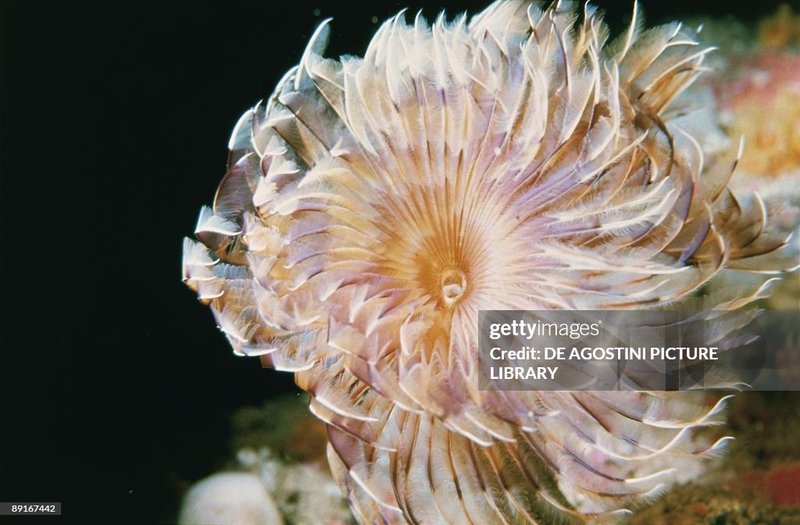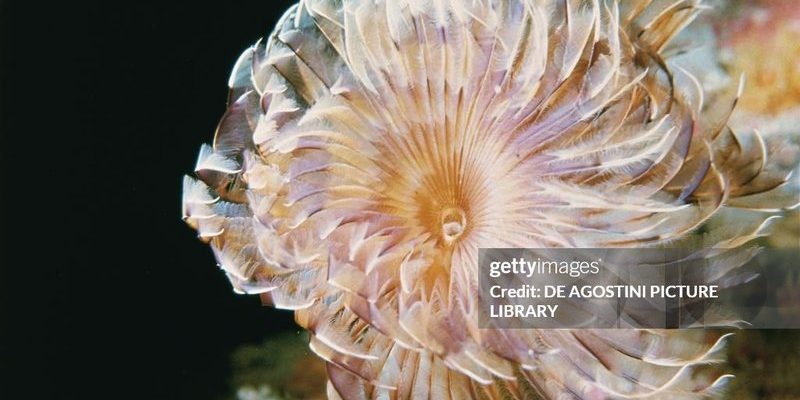
Imagine these worms as the underwater version of plants. They create structures that not only provide shelter for themselves but also offer homes for other marine organisms. By doing so, they contribute to the overall health of their habitats. Here’s the thing: understanding the role of sabellid fan worms can help us appreciate the complex web of life in our oceans. They showcase how even the most humble creatures can make a big splash in the grand scheme of things.
What are Sabellid Fan Worms?
Sabellid fan worms belong to the family Sabellidae and are often recognized for their beautiful, feather-like fans. These fans are actually a series of tentacles that extend from the worm’s body. Each worm creates its own tube, usually made of sand and mud particles, which it uses as a protective home. The fans serve a dual purpose—filtering food from the water while providing a stunning display that can attract mates.
You might be wondering about their size and appearance. Most sabellid fan worms are relatively small, typically ranging from a few centimeters to about 20 centimeters long. When fully extended, their fans can have a vibrant array of colors, from browns and greens to striking blues and purples. This makes them not just functional but visually captivating, adding a splash of color to the ocean floor.
These worms inhabit various environments, from coral reefs to muddy estuaries. They thrive in places with strong currents since their fans can capture small food particles—like plankton—floating by. By anchoring themselves to rocks or other hard surfaces, they ensure they have a front-row seat for their meals.
The Role of Sabellid Fan Worms in Ecosystems
Now let’s talk about why these worms really matter. Sabellid fan worms are essential players in their ecosystems. First off, they help filter water. As they feed, they pull in water through their fans, trapping tiny organisms and particles. This process can improve water quality, making it cleaner and clearer. Cleaner water supports a wider range of marine life, which is crucial for maintaining biodiversity.
Moreover, their tubes provide habitats for various other creatures, such as small fish and invertebrates. Think of it like a cozy apartment building in a bustling city—these tubes offer a safe haven from predators and harsh environmental conditions. By creating these shelters, sabellid fan worms enhance the structural complexity of marine environments, allowing more organisms to thrive.
Additionally, the sediments these worms use to build their tubes can bind together, helping prevent erosion. This is particularly important in coastal areas where strong tides can wash away delicate ecosystems. If you think about it, sabellid fan worms are like tiny engineers contributing to the stability and health of their habitats.
Benefits of Sabellid Fan Worms for Marine Life
The presence of sabellid fan worms supports many levels of marine life. Here’s how:
– Food Source: They serve as a food source for various marine animals, such as starfish and some fish species. The fans might attract these predators, making them an integral part of the food web.
– Biodiversity Enhancers: With their intricate tube structures, they promote diversity. More species can thrive in areas where sabellid fan worms are present, creating a more robust and resilient ecosystem.
– Nutrient Cycling: As they feed and excrete waste, they contribute to nutrient cycling within their environment. This nutrient recycling is essential for promoting growth in nearby flora and fauna.
In simple terms, sabellid fan worms are like tiny cornerstone species. Their influence extends beyond their immediate surroundings, ensuring that the larger ecosystem remains balanced and thriving.
Threats to Sabellid Fan Worm Populations
Despite their ecological importance, sabellid fan worms face several threats. Habitat destruction is a significant concern, especially with the rise of coastal development and pollution. When coastal areas are modified for human activities, the environments where these worms thrive can be severely impacted.
Pollutants can also affect their populations. Chemicals that run off into oceans can degrade water quality, making it difficult for worms to feed and reproduce. Plus, rising ocean temperatures due to climate change pose a risk, as many marine organisms struggle to adapt to quickly changing conditions.
You might be surprised to learn that even small changes in their habitat can lead to larger ripple effects. The decline of sabellid fan worm populations can reduce the number of shelters available for other marine species, impacting biodiversity and the overall health of the ecosystem.
Conservation Efforts for Sabellid Fan Worms
Given the challenges they face, conservation efforts are becoming increasingly important. Protecting their habitats is crucial, and this often involves regulating coastal development and managing pollution. Marine protected areas (MPAs) can also help safeguard these worms and their ecosystems by restricting harmful activities in essential habitats.
Education is equally important. By raising awareness about the ecological roles of sabellid fan worms, we can encourage practices that support marine health. Simple actions, like reducing plastic use and participating in local clean-up efforts, can make a difference.
Lastly, researchers continue to study these fascinating creatures, striving to understand better how they interact with their environments. This research is vital for developing effective conservation strategies that ensure sabellid fan worms—and the ecosystems they support—thrive for generations to come.
Summary: Why Sabellid Fan Worms Matter
So, what have we learned about sabellid fan worms? These remarkable creatures are not just colorful additions to our oceans; they play a vital role in maintaining the health of marine environments. By filtering water, providing habitat for other species, and contributing to nutrient cycling, they are essential components of their ecosystems.
As we face challenges like climate change and pollution, it becomes ever more critical to understand and protect these tiny architects of our oceans. Whether you’re a marine enthusiast or just someone who loves the ocean, appreciating sabellid fan worms helps us recognize the intricate connections that bind life in our waters.
In closing, let’s remember that the ocean is home to countless wonders, and sabellid fan worms are among them, quietly working behind the scenes to keep our marine ecosystems thriving. So, the next time you think of marine life, consider these fan worms and the vital contributions they make to the underwater world.

